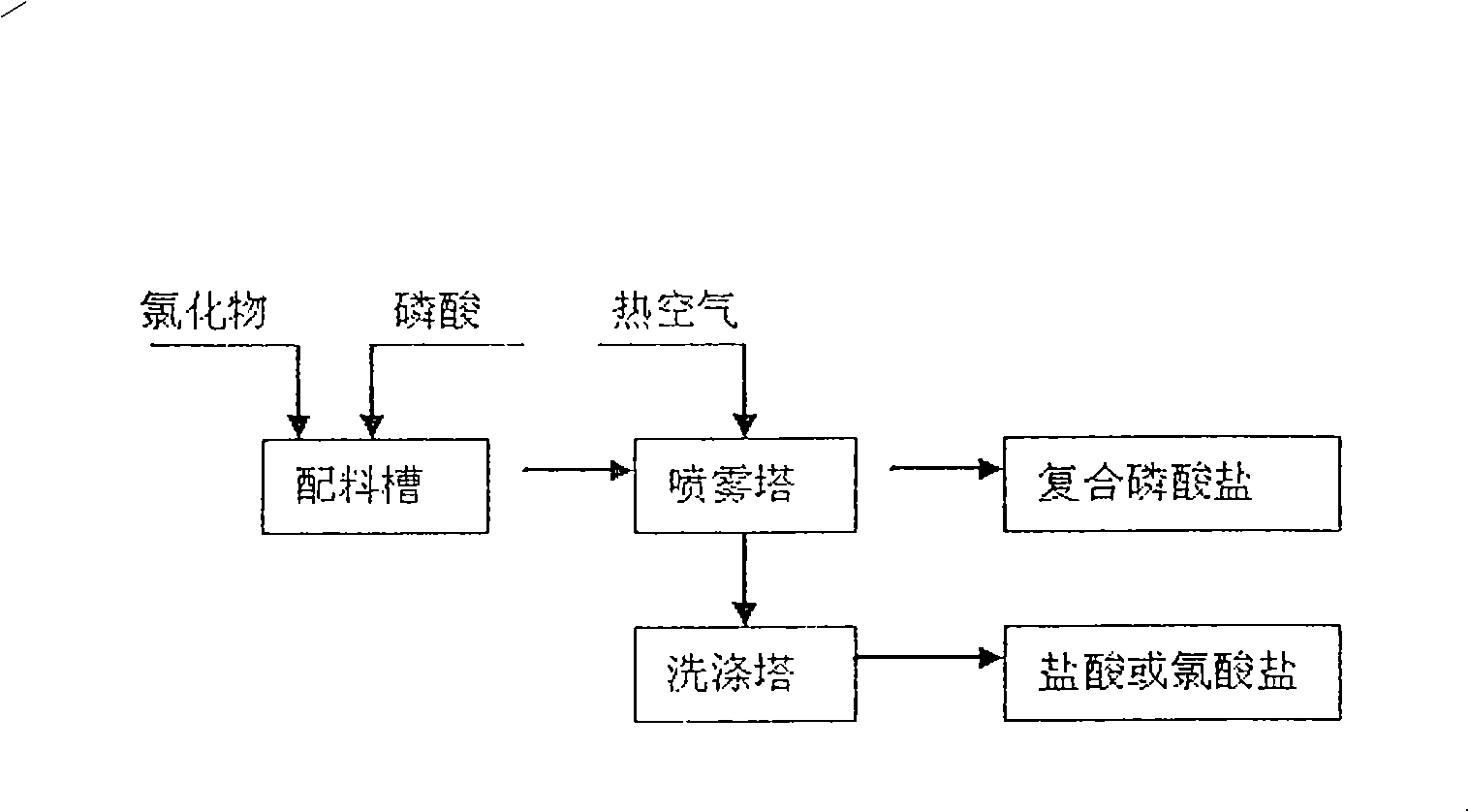Method for preparing composite phosphate
A technology of compound phosphate and phosphoric acid, applied in the direction of phosphate, phosphorus oxyacid, etc., can solve the problems of low hydrogen chloride escaping efficiency, difficulty in large-scale production, and difficulty in industrialized large-scale production, etc., and achieves simple and practical reaction equipment. The effect of short time and continuous in and out of material and liquid
- Summary
- Abstract
- Description
- Claims
- Application Information
AI Technical Summary
Problems solved by technology
Method used
Image
Examples
Embodiment 1
[0026] will contain K 2 O 59.3%; Cl - 46.98% KCl was added to the P 2 o 5 25.11% phosphoric acid solution, stir evenly in the batching tank, adjust H 3 PO 4 The / KCl molar ratio was 1.3. Transport the feed liquid to the spray drying tower for atomization, use high-temperature air for heating, control the feed volume of the atomizer and the inlet temperature of the hot air, detect that the inlet temperature of the spray drying tower is 235°C, and the outlet temperature of the spray drying tower is 185°C. At this temperature, potassium chloride and phosphoric acid complete the metathesis reaction, and the hydrogen chloride gas produced enters the water scrubber along with the tail gas to be washed to obtain hydrochloric acid, and the bottom material flows into the cooling tank for cooling and crystallization to obtain compound phosphate.
Embodiment 2
[0028] A 33% potassium chloride solution was added to the P 2 o 5 41.6% phosphoric acid solution, stir evenly in the batching tank, adjust H 3 PO 4 The / KCI molar ratio is 2.0. Transport the feed liquid to the spray drying tower for atomization, use high-temperature air for heating, control the feed volume of the atomizer and the temperature of the inlet air, and detect that the inlet temperature of the spray drying tower is 150°C, and the outlet temperature of the spray drying tower is 83°C. At this temperature, potassium chloride and phosphoric acid complete the double decomposition reaction, and the produced hydrogen chloride gas enters the water washing tower along with the tail gas to be washed to obtain hydrochloric acid.
Embodiment 3
[0030] Add industrial sodium chloride with a content of 99.1% to the 2 o 5 24.38% phosphoric acid solution, stir evenly in the batching tank, adjust H 3 PO 4 The / NaCI molar ratio was 1.05. Transport the feed liquid to the spray drying tower for atomization, use high-temperature air for heating, control the feed volume of the atomizer and the temperature of the inlet air, and detect that the inlet temperature of the spray drying tower is 700°C, and the outlet temperature of the spray drying tower is 389°C. At this temperature, sodium chloride and phosphoric acid complete the double decomposition reaction, and the hydrogen chloride gas produced enters the water scrubber along with the tail gas to be washed to obtain hydrochloric acid, and the bottom material flows into the cooling tank for cooling and crystallization to obtain compound phosphate.
PUM
 Login to View More
Login to View More Abstract
Description
Claims
Application Information
 Login to View More
Login to View More - R&D
- Intellectual Property
- Life Sciences
- Materials
- Tech Scout
- Unparalleled Data Quality
- Higher Quality Content
- 60% Fewer Hallucinations
Browse by: Latest US Patents, China's latest patents, Technical Efficacy Thesaurus, Application Domain, Technology Topic, Popular Technical Reports.
© 2025 PatSnap. All rights reserved.Legal|Privacy policy|Modern Slavery Act Transparency Statement|Sitemap|About US| Contact US: help@patsnap.com



